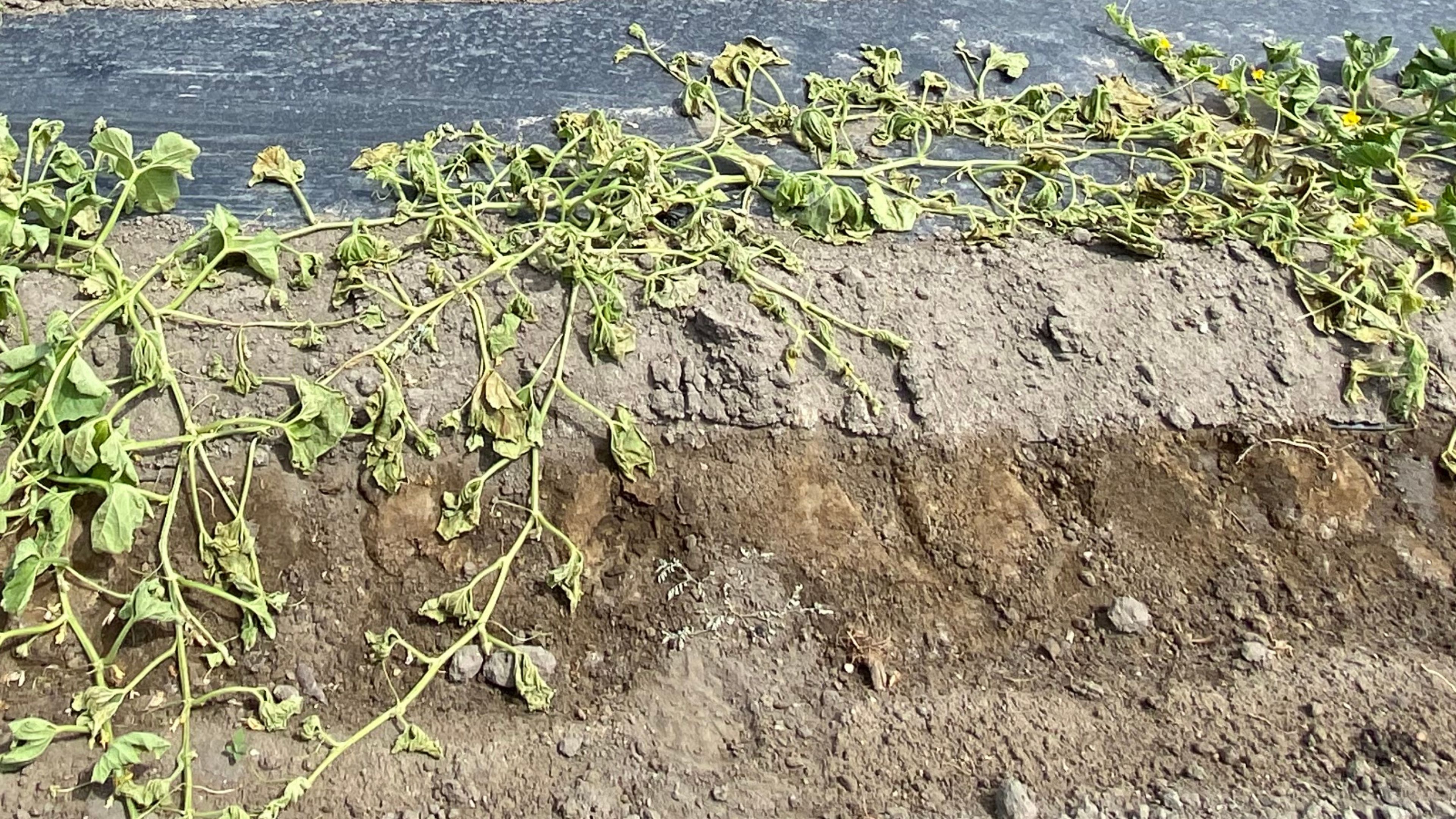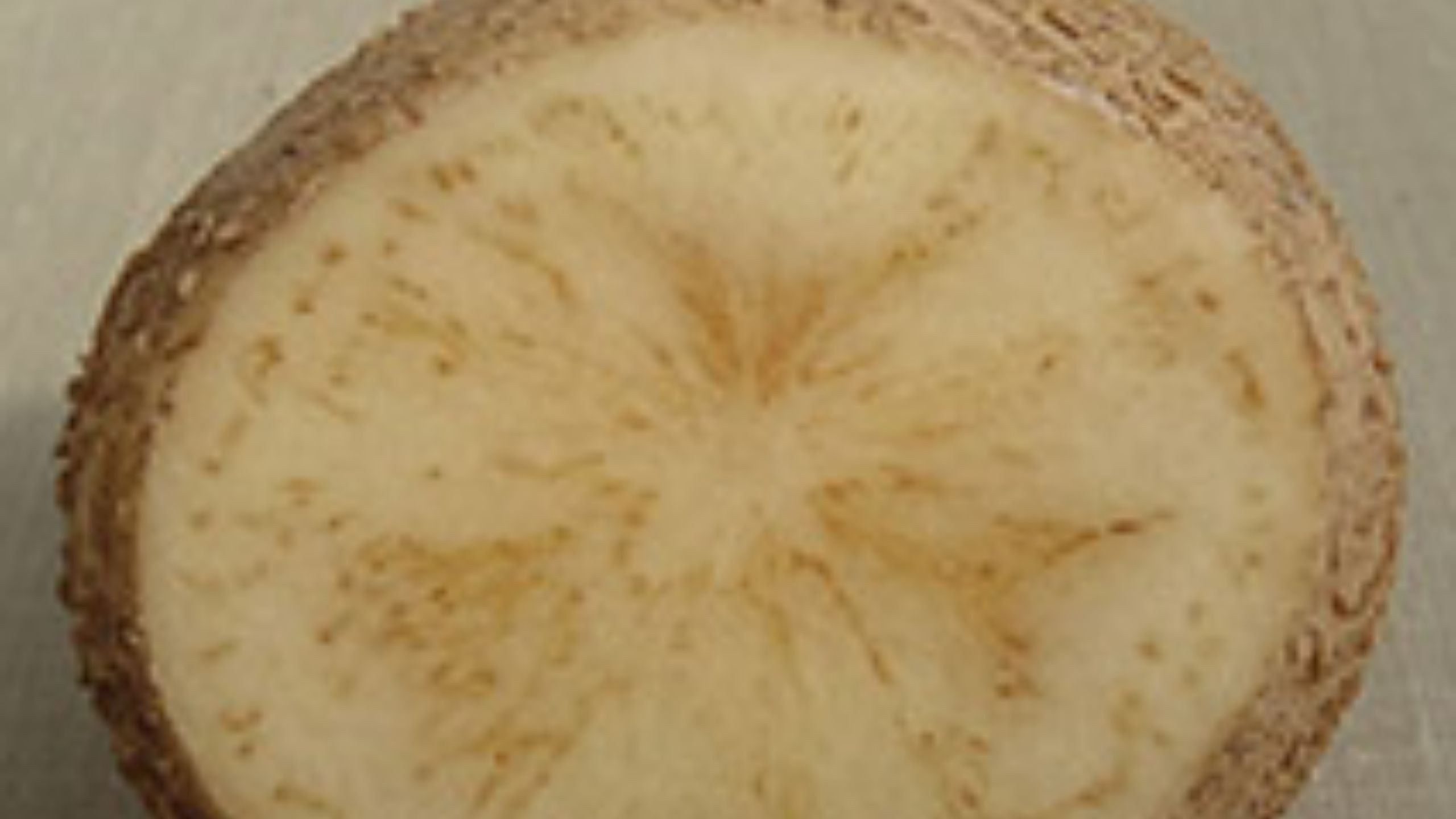Damping-off
October 2014
Michael Johnson, Grand County Horticulture Agent • Claudia Nischwitz, Extension Plant Pathologist

Fig. 1. Bare spots in seedling tray where seedlings
had been killed.
 Fig. 2. Stem of seedling turns brown and seedling falls.
Fig. 2. Stem of seedling turns brown and seedling falls.Quick Facts
- Damping-off is caused by several soilborne fungi
- The fungi thrive in wet conditions. Some have motile spores that can swim in water from root to root
- It can easily be prevented by good sanitation and good cultural practices
Damping-off is caused by several soilborne fungi including Pythium, Rhizoctonia, Fusarium and Phytophthora species. The fungi kill seedlings that are just germinating and seedlings that have been growing for several days.
Symptoms
Symptoms vary depending on time of infection. If seedlings are killed during germination, circular bare spots occur in seed flats (Fig. 1). If seedlings have emerged, they may look normal the first few days and then the lower stem turns brown or black and the seedling falls over (Fig. 2).
Disease Cycle
Fungi causing damping-off are soilborne and can be found anywhere even small amounts of soil and dirt are left including reused seed trays and benches. Once the seed is planted and watered, fungal spores or mycelium will start to colonize the soil in the trays. The chance of having an outbreak of damping off is increased when seedlings are kept very wet. Pythium, for example, is a fungal-like organism that has motile spores. The spores have hair-like appendages (flagella) they use to propel themselves in a film of water from tray cell to tray cell. Damping-off pathogens present on dirty greenhouse benches can colonize the soil in seed trays through openings in the tray bottom. Once one seedling shows symptoms in a seed tray, neighboring seedlings are often infected as well.
Management
Sanitization
The most important and most efficient control strategy to manage damping-off is sanitization. Only use clean sterilized benches (fungi can adhere to surfaces of benches and previously used seeding trays). Metal benches are much easier to disinfect than wooden benches and disease incidence can be reduced by switching to metal benches. To clean and disinfect benches use a 10% bleach solution and thoroughly scrub the benches. Using new trays or pots for seedlings every year is best. Trays can be re-used from previous years but need to be scrubbed to remove all adhering dirt and then soaked for one hour in a 10% bleach solution. After removal from the bleach, the trays need to be rinsed well with water to remove any bleach residue. To avoid contamination from benches and limit infections to individual trays or pots, each tray should be placed in a flat without holes and pots in individual saucer to limit the spread of irrigation water and pathogen to other trays.
The potting mix used for planting seedlings should be sterile. Potting mix used to start seedlings and purchased at garden centers should be free of pathogens. Do not let the sterile potting mix come in contact with potentially contaminated ground especially when in an open bag. Storing unused potting mix in a container with a lid will help prevent contamination. When ready to begin seeding the trays avoid contact with other sources of contamination such as dirty hands, tools, non-sterilized pots or benches and soil underneath the benches.
Cultural Control
If infections do occur, seedlings should be disposed of with soil they are growing in and adjacent seedlings closely monitored for infection. For irrigation only use clean water and not pond water or run-off that could have come into contact with soil that contains dampingoff pathogens.
It is important to get plants to germinate and grow fast. To accomplish that use adequate lighting and heating. If you can, use bottom heat as it will speed up germination. Do not plant seed too deep as it will put stress on the seedling trying to reach the surface and expose it for a longer period of time to potential pathogens in the soil. Conditions in seeding trays should be kept less favorable to fungi. Irrigation should be adequate but seedlings should not be kept too dry or sit in water for days so avoid excessive irrigation. Using well drained potting mix also reduces the possibility of overwatering. If your seeding trays do not have individual cells for each seed, sow seed thinly to have better air circulation when seedlings emerge.
Chemical Control
Seed treatments can reduce damping-off incidence. Often seed that is already treated with fungicides can be purchased.
References and Further Reading
- Hudelson, B., 2004. Damping-off. University of Wisconsin Cooperative Extension
Image Credits
1, 2 Mary Ann Hansen, Virginia Polytechnic Institute and State University, Bugwood.org
Related Research




















